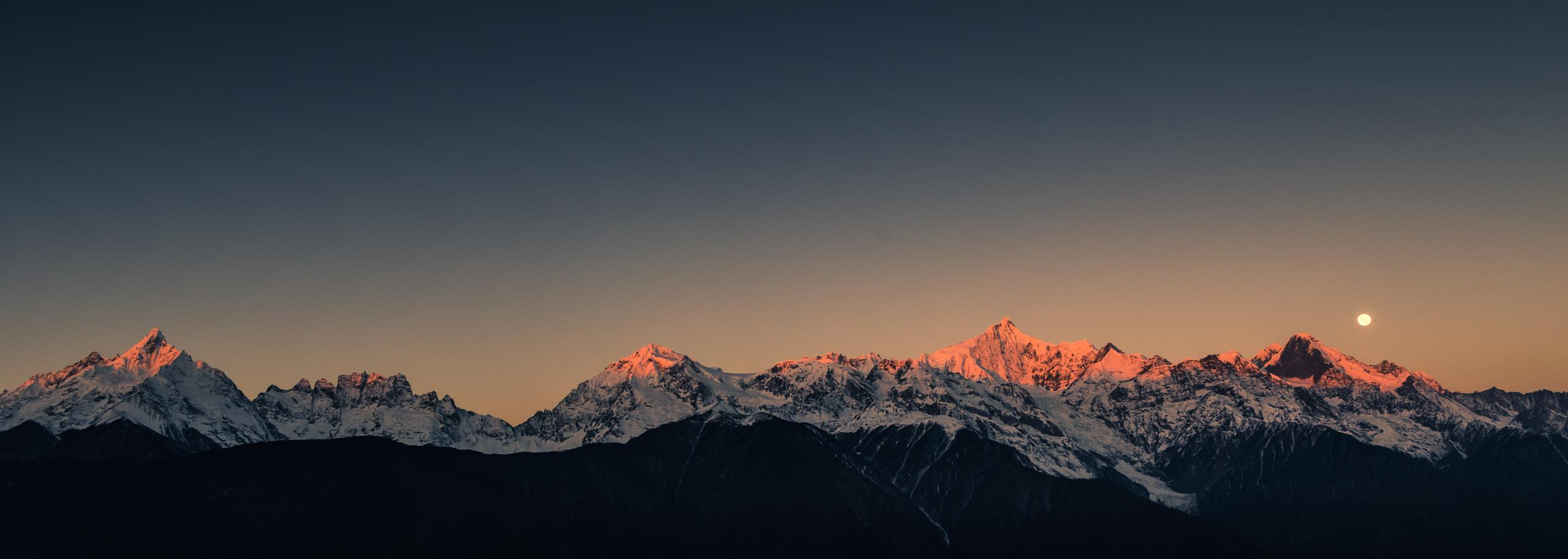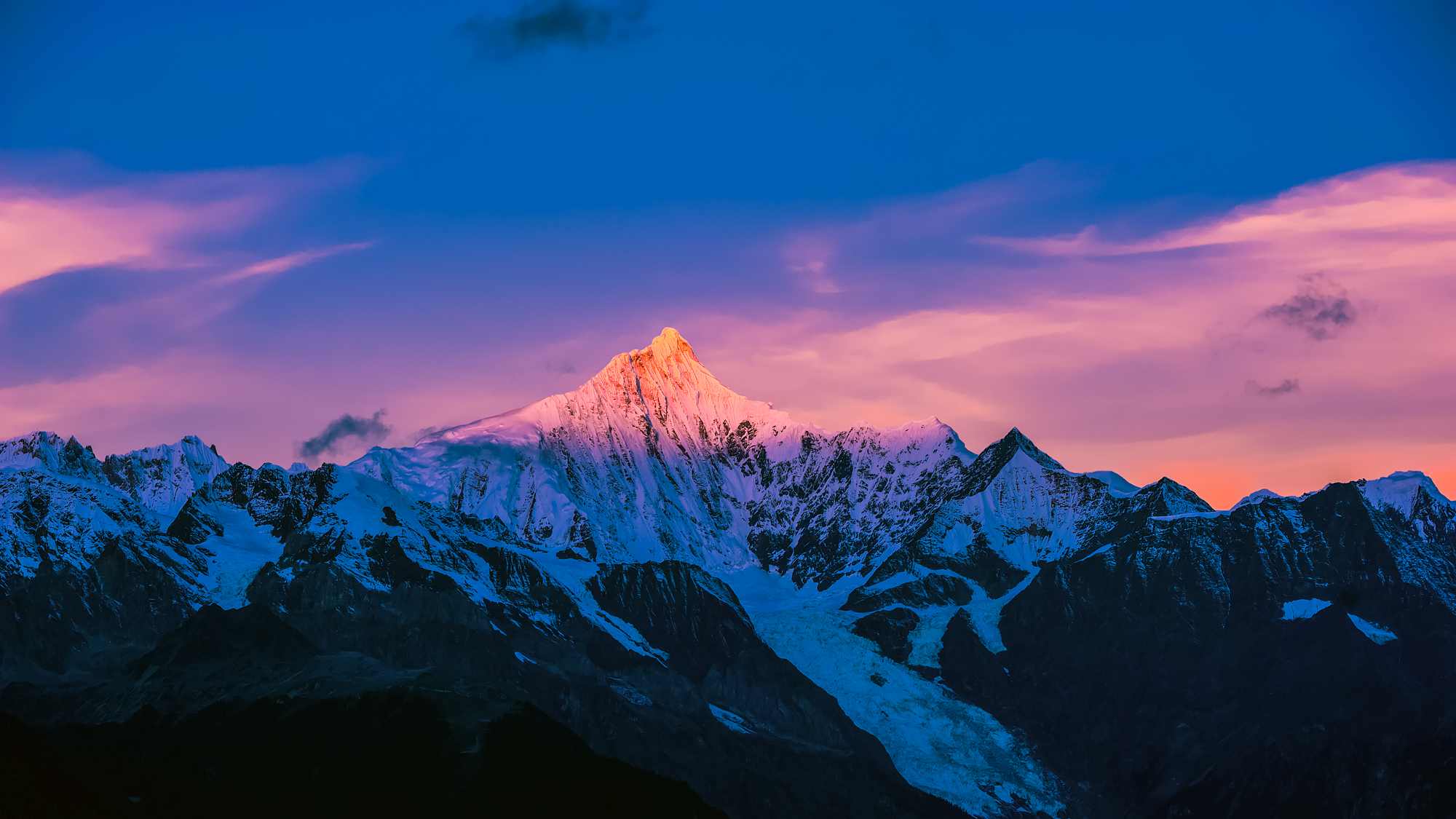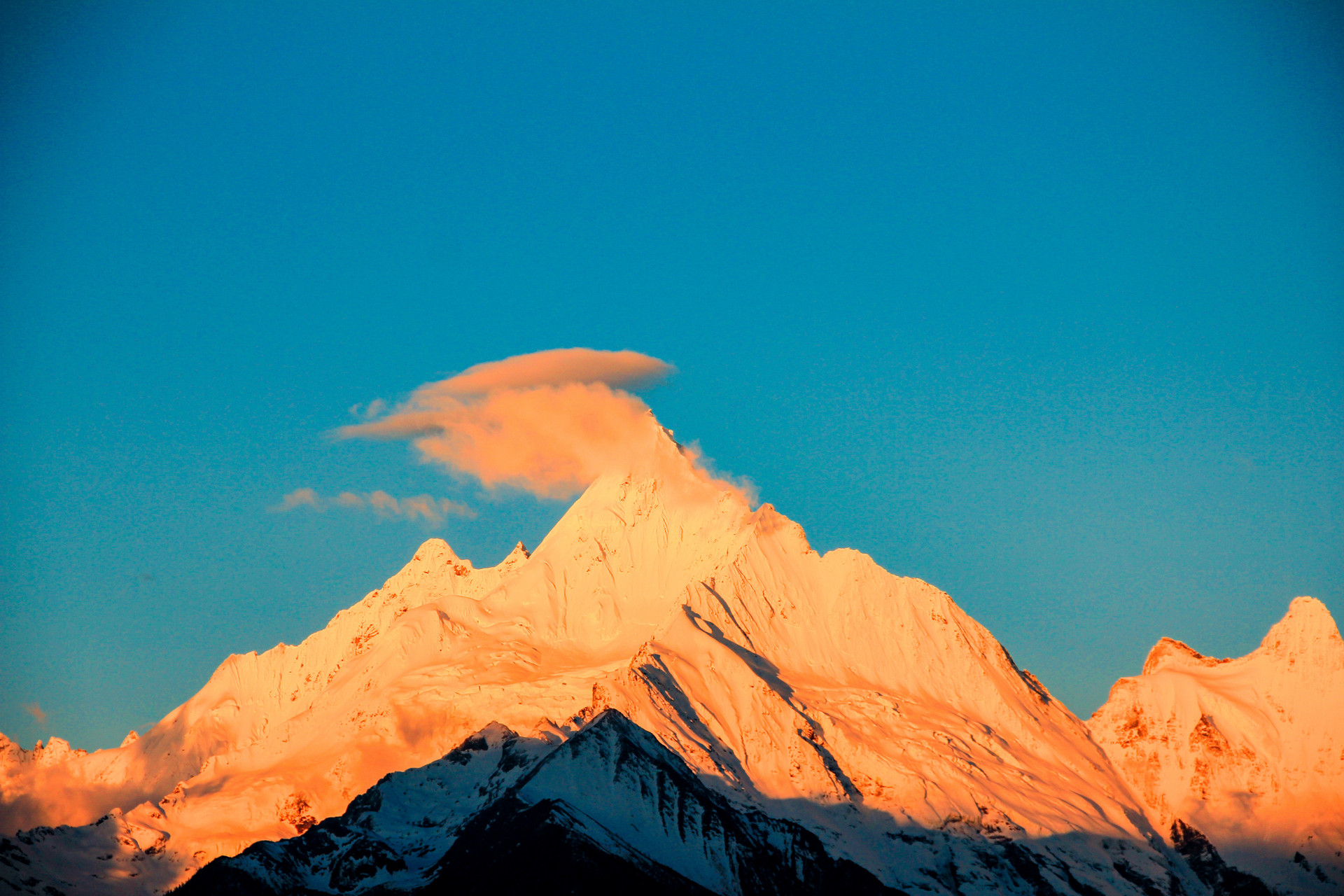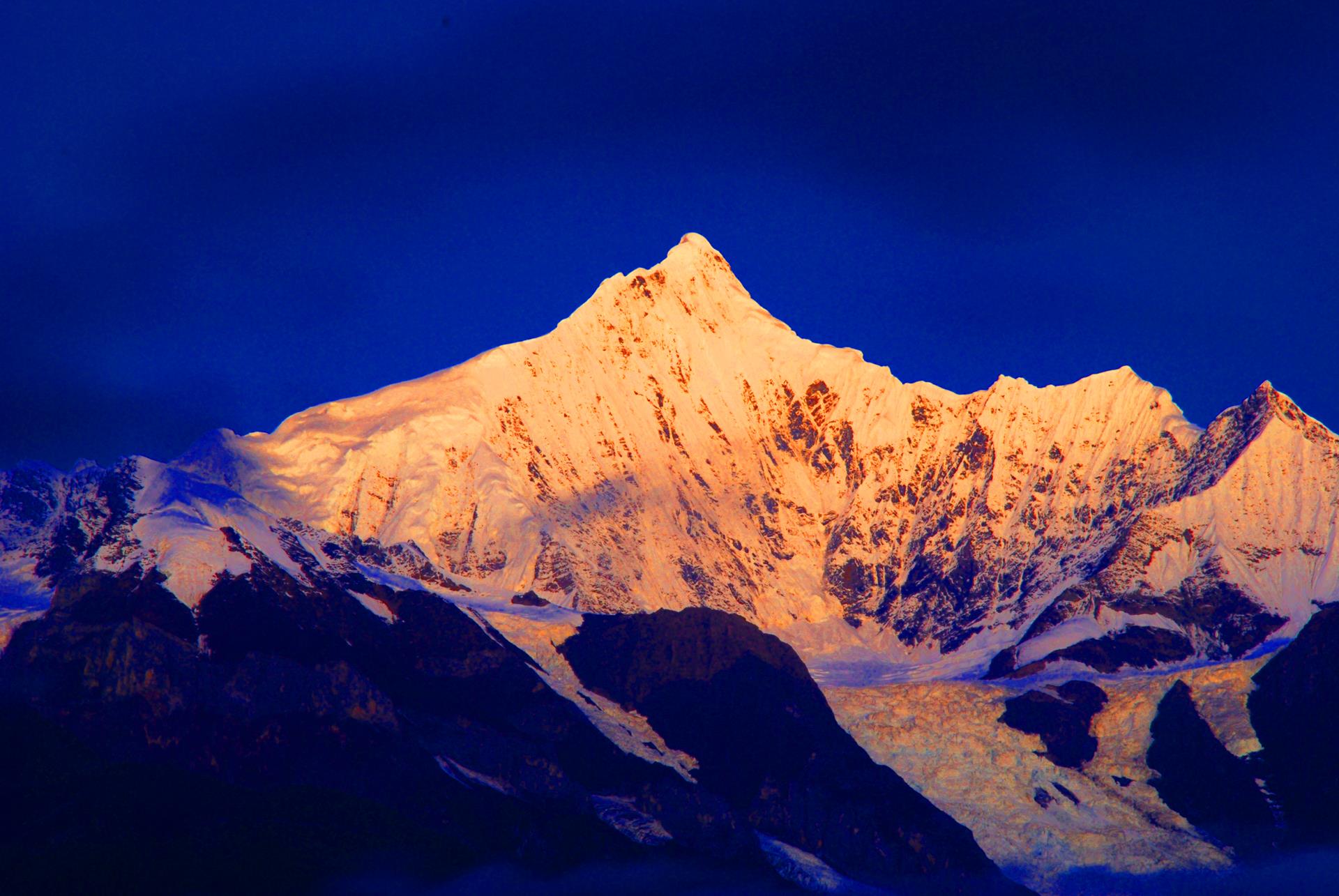



Meri Snow Mountain (Meili Snow Mountain), known as Prince Snow Mountain, is regarded as one of the most sacred mountains of Tibetan Buddhism.
Thirteen peaks stand proud, reaching altitudes of more than 6,000 metres (19.685 feet), and are referred to as the Prince’s 13 Peaks.
The highest Kawagebo peak rises to a height of 6740 metres (22,112.86 feet), making Meri Snow Mountain the highest in Yunnan.
Many people are drawn to this natural wonder, to witness the sunrise as it hits the mountain range in the morning and lights up the snowy peaks with golden rays of sunlight. Starting with Kawagebo and then spreading to the other peaks.
The continuous mountain ridges feature snowy peaks, set against an equally stunning backdrop – with the sun throwing its warm colours onto the low-floating clouds which form some extraordinary shapes. It is certainly a sight to behold!
This mountainous area also presents an air of mystery, when dense fog and cloud surround its peaks.
Meri Snow Mountain is shrouded in mist all year round, especially around the main peak Kawagebo. It can be very difficult to make out its face. Legend has it that if you catch a glimpse, you will enjoy good luck for a whole year.
You can catch the most awe-inspiring moments: the sunrise and sunset. You will be attracted by its majesty.
(link to the page of Meri Snow Mountain)
https://www.visityunnanchina.com/attractions/natural-attractions/meri-snow-mountains
From the beginning of November to May is a great time to see Meili Snow Mountain, the ‘Sunshine Golden Mountain,’at its best. During this time, you will enjoy many sunny days, with clear skies and good visibility. The Kawagebo peak can often be seen in all its glory.
A two-day visit is best to capture the best features of this natural wonder.
Be sure to check the weather forecast as you plan your travels. Go for the sunny days, when the scenery will truly be alive.
- Feilaisi Temple (Flying Monastery) Incense Platform
Situated just over 10 kilometers away from Deqin County, the incense platform of Feilaisi Temple is a great position to capture a panoramic view of the 13 peaks and to enjoy the wonderful sunrises and sunsets engulfing Meri Snow Mountain.
The Feilai Temple is a small but interesting Tibetan temple. It was originally built in the 42nd year of Ming Wanli’s reign (1614 AD), with a history of almost 385 years.
The altitude of the platform is around 3,470 metres (11,380 feet). It is always the first stop for tourists visiting the snow mountains.
- Wunongding Viewing Deck
Wunongding Viewing Deck (‘Misty Farm Summit’) is on National Highway G214 between Shangri-La and Deqin County Town, 15 kilometres (nine miles) south of the town of Deqin County.
The altitude of Wunongding Viewing Deck is around 3,500 metres (11,500 feet).
Standing there, you will see 13 white towers and an open valley against the backdrop of the snowy mountains. Compared with Feilai Temple Viewing Platform, Wunongding Deck has a narrower view of the mountains.
But, with an open terrain, the scenery is spectacular. It is also a fantastic place to be at night, when the stars shine brightly.
1)Hiring a car from Kunming is a great way to explore. Or you can take a public bus.
2)By Public Bus
Take a bus from Shangri-La to Deqin, which takes around six hours. There are just four buses daily. Then, for the famous view, charter a car from Deqen to Feilai Temple or Wunongding Viewing Deck. You can reach them in about half an hour.
It is recommended to stay near Feilai Temple, where there are many hotels, from which you can take photos of Merii Snow Mountain. You will not find any hotels close to Wunongding.
Try local foods such as Yak hot pot, pork rib hot pot and stewed chicken with matsutake. You can also sample buttered tea and barley wine.










